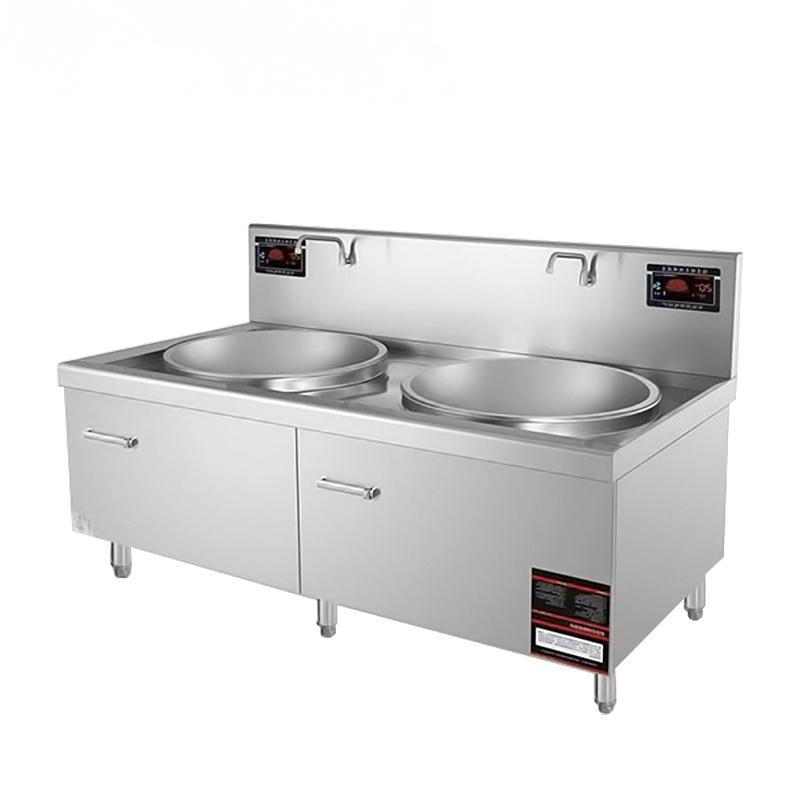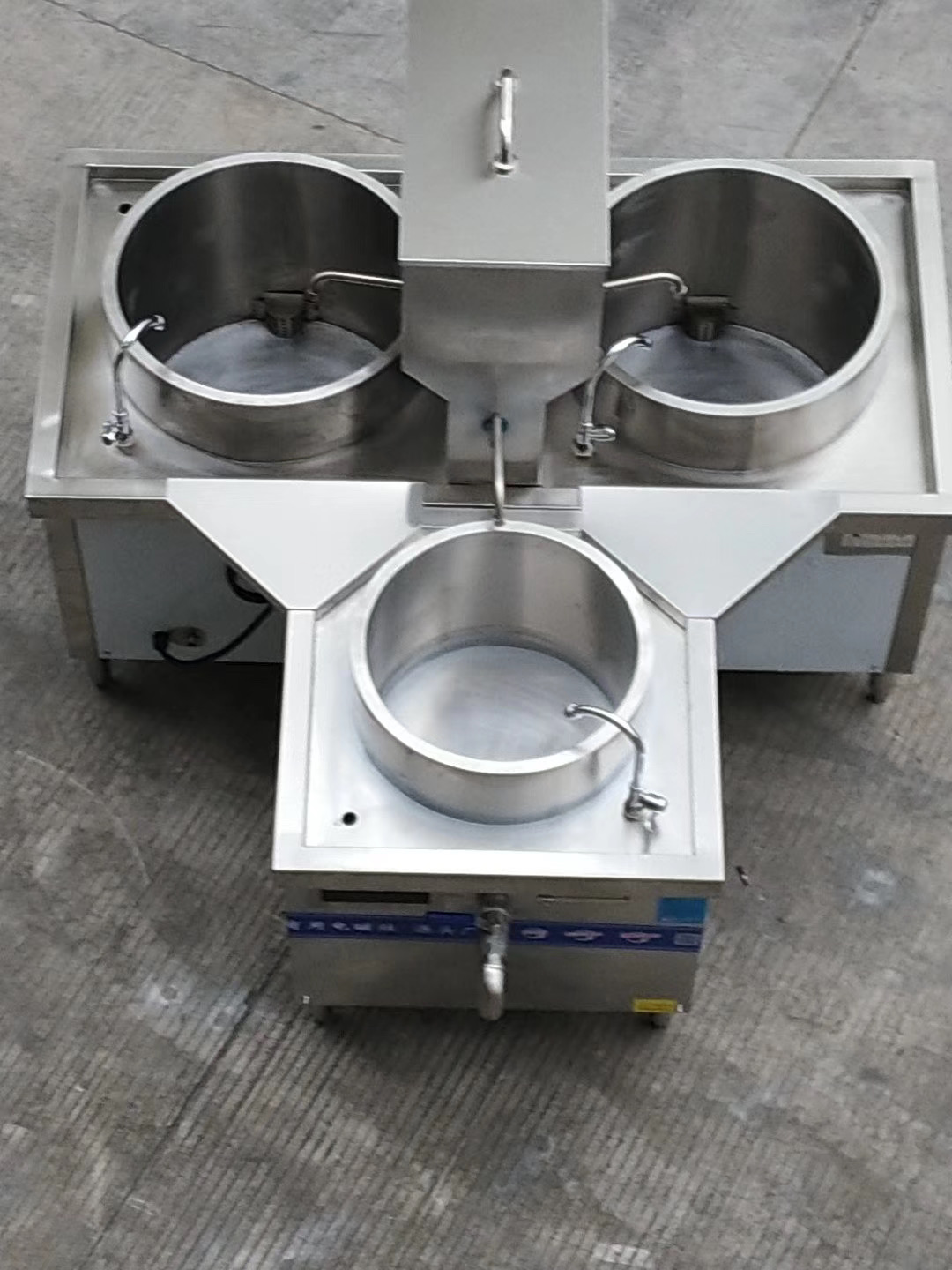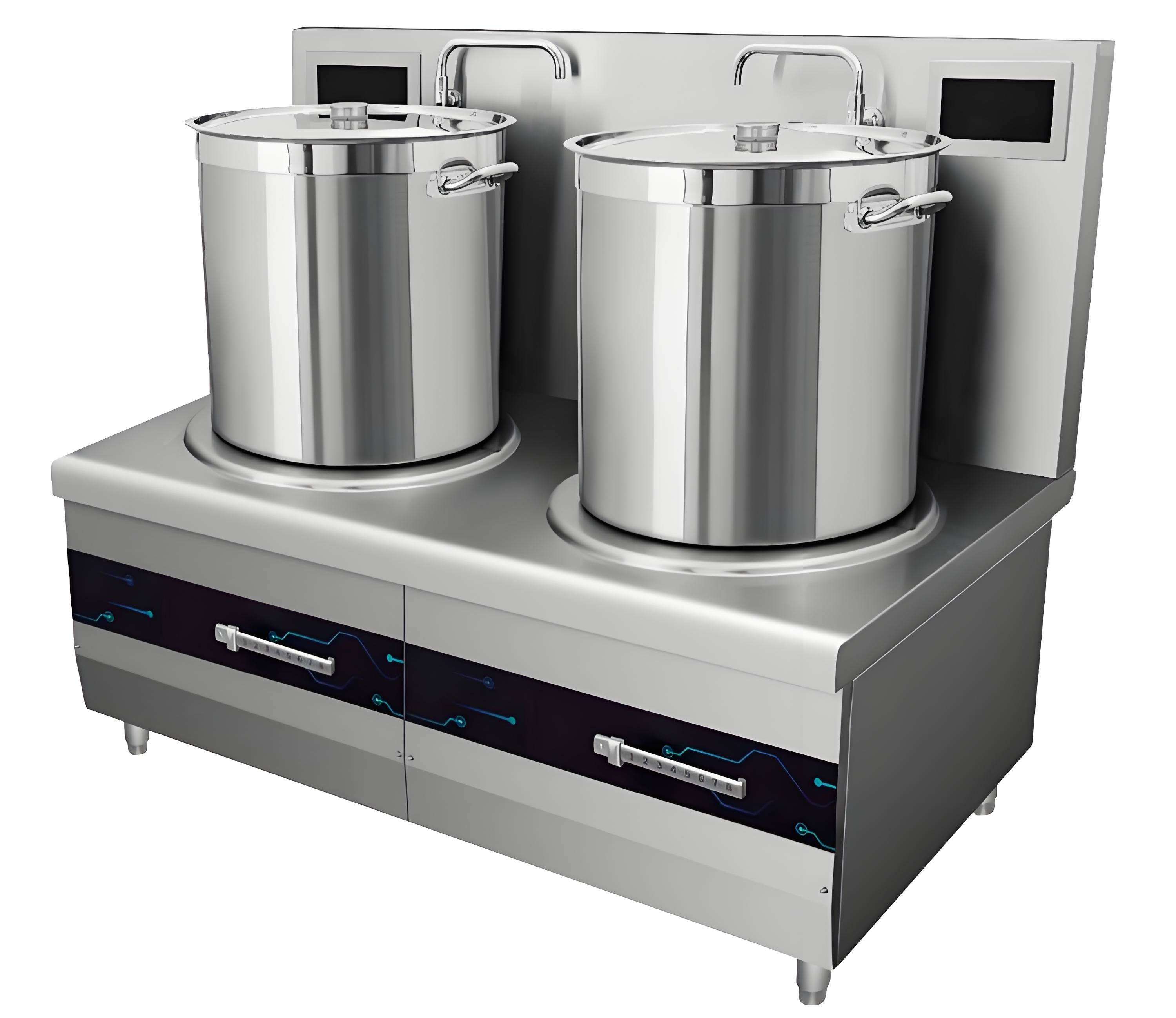In the bustling world of commercial kitchens, efficiency and versatility are key. Chefs and kitchen managers are constantly on the lookout for equipment that can streamline operations, enhance food quality, and meet the diverse demands of their menus. One such piece of equipment that has gained significant attention in recent years is the commercial induction cooker with stir-frying function. But is it really as practical as it seems? Let’s dive deep into this topic and explore its pros, cons, and real-world applications.
Understanding Commercial Induction Cookers with Stir-Frying Function
Before we delve into the practicality, let’s first understand what these cookers are and how they work. Commercial induction cookers use electromagnetic fields to heat the cookware directly, rather than relying on a traditional heating element. This technology offers several advantages, including rapid heating, precise temperature control, and energy efficiency. When combined with a stir-frying function, these cookers aim to mimic the high-heat, rapid-cooking techniques traditionally associated with woks and gas stoves.

Key Features of Commercial Induction Cookers with Stir-Frying Function
High Power Output: These cookers are designed to deliver high power, allowing for quick searing and stir-frying.
Precise Temperature Control: Unlike gas stoves, which can be difficult to regulate precisely, induction cookers offer fine-tuned temperature adjustments.
Energy Efficiency: Induction technology is known for its energy efficiency, as it directly heats the cookware rather than the surrounding air.
Safety: The cooktop surface remains relatively cool, reducing the risk of burns and fires.
Ease of Cleaning: The smooth surface of induction cookers makes them easy to wipe down and maintain.
The Appeal of Stir-Frying in Commercial Kitchens
Stir-frying is a popular cooking technique in many cuisines, particularly in Asian cooking. It involves quickly cooking ingredients in a small amount of oil over high heat, often in a wok. The rapid cooking process helps to retain the nutrients, color, and texture of the ingredients, resulting in flavorful and visually appealing dishes.
In commercial kitchens, stir-frying is often used to prepare a variety of dishes, from stir-fried vegetables and noodles to meats and seafood. The ability to quickly cook large quantities of food while maintaining high quality is crucial for meeting the demands of busy restaurants and catering services.

Evaluating the Practicality of Commercial Induction Cookers with Stir-Frying Function
Now, let’s evaluate the practicality of these cookers in a commercial kitchen setting. We’ll consider several factors, including performance, versatility, cost, and maintenance.
Performance
Speed and Efficiency: One of the primary advantages of induction cookers is their speed. They can heat up quickly and maintain a consistent temperature, allowing for rapid stir-frying. This is particularly beneficial in busy kitchens where time is of the essence.
Temperature Control: Precise temperature control is essential for stir-frying, as different ingredients require different cooking temperatures. Induction cookers excel in this area, allowing chefs to adjust the heat with precision.
Heat Distribution: While induction cookers can generate high heat, the distribution of that heat can vary. Some models may have hot spots or uneven heating, which can affect the quality of stir-fried dishes. However, high-quality induction cookers are designed to minimize this issue, providing even heat distribution across the cookware.
Versatility
Menu Flexibility: A commercial induction cooker with stir-frying function can be used for a variety of cooking tasks beyond stir-frying. It can be used for boiling, simmering, sautéing, and more, making it a versatile addition to any kitchen.
Cookware Compatibility: Induction cookers require cookware that is made of ferromagnetic materials, such as cast iron or stainless steel. While this may limit the types of cookware that can be used, it also ensures that the cookware is durable and can withstand high heat.
Cost
Initial Investment: Commercial induction cookers with stir-frying function can be more expensive than traditional gas stoves or electric cooktops. However, the initial investment should be weighed against the long-term benefits, such as energy savings and increased efficiency.
Operating Costs: Induction cookers are generally more energy-efficient than gas stoves, which can lead to lower operating costs over time. Additionally, the reduced risk of burns and fires can result in lower insurance premiums and fewer safety-related expenses.

Maintenance
Durability: High-quality induction cookers are built to last, with durable components that can withstand the rigors of a commercial kitchen. However, regular maintenance is still necessary to ensure optimal performance and longevity.
Cleaning: The smooth surface of induction cookers makes them easy to clean. Simply wipe down the surface with a damp cloth after use to remove any food debris or spills. Avoid using abrasive cleaners or scrubbers that could scratch the surface.
Repair and Replacement: In the event of a malfunction or breakdown, it’s important to have access to reliable repair services or replacement parts. Choose a reputable manufacturer that offers good warranty coverage and customer support.
Table: Comparison of Commercial Induction Cookers with Stir-Frying Function vs. Traditional Gas Stoves
| Aspect | Commercial Induction Cooker with Stir-Frying Function | Traditional Gas Stove |
|---|---|---|
| Speed and Efficiency | High power output, rapid heating, precise temperature control | Can be slower to heat up, less precise temperature control |
| Heat Distribution | Even heat distribution (with high-quality models), minimal hot spots | Can have hot spots, uneven heating |
| Versatility | Can be used for a variety of cooking tasks, compatible with ferromagnetic cookware | Versatile, but may require specific types of cookware for certain tasks |
| Cost | Higher initial investment, but potentially lower operating costs over time | Lower initial investment, but higher operating costs due to gas consumption |
| Maintenance | Durable components, easy to clean, requires regular maintenance | May require more frequent repairs due to wear and tear, harder to clean |
| Safety | Cooler cooktop surface, reduced risk of burns and fires | Hot surfaces, higher risk of burns and fires |
Real-World Applications and Case Studies
To better understand the practicality of commercial induction cookers with stir-frying function, let’s look at some real-world applications and case studies.
Case Study 1: High-End Asian Restaurant
A high-end Asian restaurant decided to upgrade its kitchen equipment by installing commercial induction cookers with stir-frying function. The restaurant’s chef was impressed with the speed and precision of the induction cookers, which allowed him to quickly prepare stir-fried dishes without sacrificing quality. The restaurant also noticed a reduction in energy costs and a decrease in the risk of burns and fires.
Outcome: The induction cookers became an integral part of the restaurant’s kitchen, improving efficiency and food quality while enhancing safety.

Case Study 2: Catering Company
A catering company that specializes in Asian cuisine was looking for a more efficient and portable cooking solution for its outdoor events. The company decided to invest in commercial induction cookers with stir-frying function, which could be easily transported and set up at various locations. The induction cookers proved to be a hit, allowing the company to quickly prepare stir-fried dishes for large groups of people.
Outcome: The induction cookers enhanced the catering company’s reputation for providing high-quality, efficient service, leading to increased business and customer satisfaction.
Tips for Choosing the Right Commercial Induction Cooker with Stir-Frying Function
Based on my experience and the case studies above, here are some tips for choosing the right commercial induction cooker with stir-frying function for your kitchen:
Consider Your Needs: Think about the types of dishes you’ll be preparing and the volume of food you’ll be cooking. Choose a cooker with the appropriate power output and size to meet your needs.
Look for Quality: Invest in a high-quality induction cooker from a reputable manufacturer. Look for models with durable components, even heat distribution, and precise temperature control.
Check Cookware Compatibility: Ensure that the induction cooker is compatible with the types of cookware you plan to use. Ferromagnetic materials, such as cast iron or stainless steel, are generally required.
Consider Maintenance and Support: Choose a manufacturer that offers good warranty coverage and customer support. Ensure that you have access to reliable repair services or replacement parts in case of a malfunction or breakdown.
Evaluate Cost and ROI: While commercial induction cookers with stir-frying function can be more expensive than traditional gas stoves, consider the long-term benefits, such as energy savings and increased efficiency. Calculate the return on investment (ROI) to determine if the initial investment is worth it for your business.

Final Thoughts
In conclusion, commercial induction cookers with stir-frying function can be highly practical for commercial kitchens. They offer speed, efficiency, precise temperature control, and safety benefits that can enhance the quality of stir-fried dishes and streamline kitchen operations. However, it’s important to carefully consider your needs, budget, and maintenance requirements before making a purchase.
By choosing a high-quality induction cooker from a reputable manufacturer and following proper maintenance practices, you can ensure that your investment pays off in the long run. Whether you’re running a high-end restaurant, a catering company, or any other type of commercial kitchen, a commercial induction cooker with stir-frying function could be the key to unlocking greater efficiency and food quality.

Related Questions
1. Can I use any type of wok with a commercial induction cooker with stir-frying function?
No, not all woks are compatible with induction cookers. You’ll need to use a wok made of ferromagnetic materials, such as cast iron or stainless steel. Additionally, the wok should have a flat bottom to ensure proper contact with the induction cooktop.
2. How do I clean a commercial induction cooker with stir-frying function?
Cleaning a commercial induction cooker with stir-frying function is relatively easy. Simply wipe down the surface with a damp cloth after use to remove any food debris or spills. Avoid using abrasive cleaners or scrubbers that could scratch the surface. For stubborn stains, you can use a mild detergent or a specialized induction cooktop cleaner.
3. Are there any safety risks associated with using a commercial induction cooker with stir-frying function?
While commercial induction cookers are generally safer than traditional gas stoves due to their cooler cooktop surfaces, there are still some safety risks to consider. These include electrical hazards if the cooker is not properly grounded or if the wiring is damaged. Additionally, there’s a risk of burns if the cookware is not handled properly or if the cooker’s surface is not allowed to cool down before cleaning. To minimize these risks, follow the manufacturer’s instructions, ensure proper grounding and wiring, and use caution when handling hot cookware.
4. Can I use a commercial induction cooker with stir-frying function for other cooking tasks besides stir-frying?
Yes, a commercial induction cooker with stir-frying function can be used for a variety of cooking tasks beyond stir-frying. It can be used for boiling, simmering, sautéing, and more, making it a versatile addition to any kitchen.
5. How long do commercial induction cookers with stir-frying function last?
The lifespan of a commercial induction cooker with stir-frying function depends on several factors, including the quality of the cooker, the frequency of use, and the level of maintenance. With proper care and maintenance, a high-quality induction cooker can last for many years, providing reliable performance and efficiency. However, it’s important to regularly inspect the cooker for signs of wear and tear and address any issues promptly to ensure its longevity.



